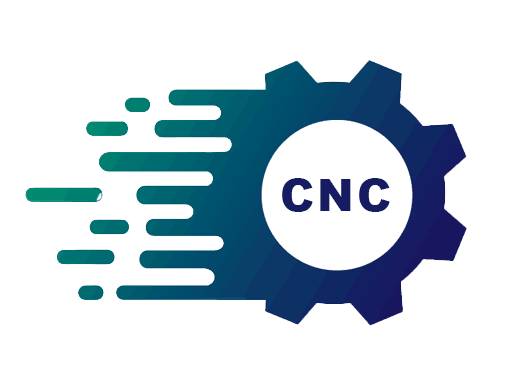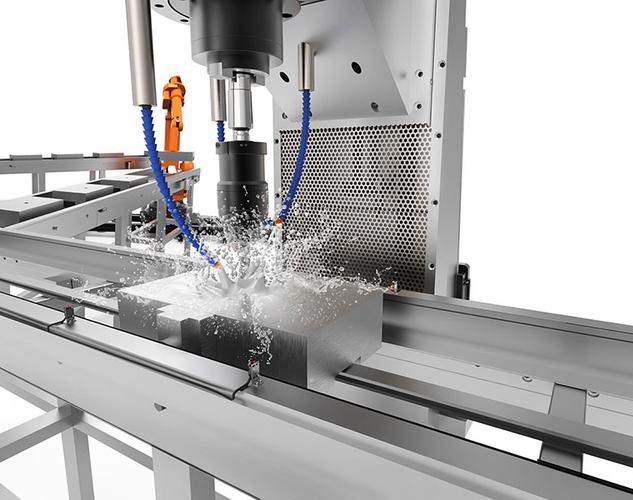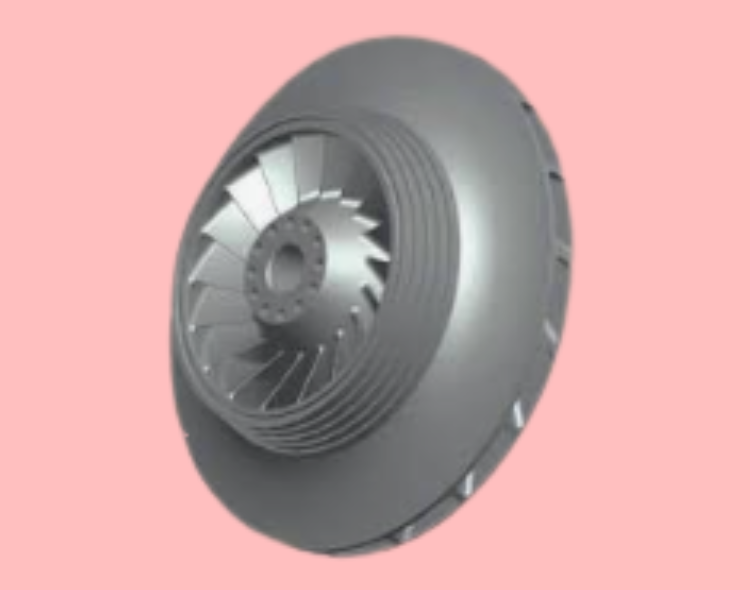航空航天制造商需要稳定的优质航空航天零件供应,这些零件必须符合我们所熟知的行业的严格要求和标准。
Aerospace manufacturers need a steady supply of quality aerospace parts. These parts must meet the stringent requirements and standards that we know the industry for. We are talking about parts that are sometimes in the mission-critical category.
The aerospace industry has stringent testing requirements and costly repercussions of part failure. Therefore, accurate and quality parts are synonymous with this industry. CNC machining for the aerospace industry has proven to be a valuable asset for manufacturers.
But what does aerospace CNC machining entail?
This in-depth guide looks at the details of aerospace CNC machining. Read on to discover the applications, materials used, and the most popular surface finishes for CNC machined parts in this industry.
What Is Aerospace CNC Machining?
To recap a bit, CNC machining is a method that aerospace machining companies use to remove material from a solid workpiece. The material removal process is systematic. Its goal is to create a specific shape and size from the material. This process is defined by fast-moving and rotating cutting tools capable of creating complex geometries. The CNC machining operation is computer-controlled for higher repeatability, speed, and quality.
In the aerospace industry, CNC machining is a fundamental part of the manufacturing process. It may not be the only manufacturing method for this industry. However, this manufacturing method is widely popular among aerospace companies for its incomparable tolerances.
Swiss machining is particularly popular in the aerospace CNC machining arena. We could say that CNC machining is virtually universal in aerospace machining. Visit our blog section to learn more about the Swiss machining process.
What Materials Are Used In Aerospace Machining?
Variety of Aerospace Manufacturing Materials
Aerospace machining companies use a variety of materials. These materials must meet several criteria to guarantee safe and durable performance in a sensitive environment. Apart from high strength, the materials must be lightweight. Corrosion resistance is also an essential property for aerospace materials.
Another common requirement is that to use these materials, you need to subject them to machining processes.
Machining of Aircraft Parts
When it comes to aerospace machining, various special materials come to mind. That’s because this industry is vulnerable to environmental and other factors. It is among the industries with high-performance requirements for materials.
Here are some factors of the aerospace environment that make material selection a critical affair:
High exposure to corrosion
Rough surface impact
Extreme temperatures – hot and cold
Machinists of aerospace parts must choose materials that can withstand these issues and extremes. In this section of the guide, we will review several materials that fit the aerospace CNC machining requirements.
Aluminum & Aluminum Alloys
As you would guess, aluminum and aluminum alloys are among the most suitable materials for aerospace CNC machining. The use of aluminum and its alloys in the aerospace space may have dwindled in recent times. However, the material remains central to the success of the aerospace industry.
Advantages of Aluminum & Aluminum Alloys
One may wonder why the material is preferable in the manufacture of aircraft and space shuttles, even though an option such as steel is tougher and more affordable. It all comes down to the low weight of aluminum and its alloys.
A high strength-to-weight ratio is suitable for high-demanding aerospace environments. The best material here is stronger and lighter. Aluminum and its alloys have high strength-to-weight ratios.
To suit the requirements of this industry even more, aluminum and aluminum alloys are relatively heat and corrosion-resistant. No wonder many structural components are made from this material.
Different Aluminum Alloys
When aluminum does not meet the specific material requirements, aerospace CNC machinists may use alloys. Popular alloying elements for aluminum are manganese, nickel, magnesium, and silicon. Owing to the high strength demands of the industry, the strongest aluminum alloys are often the most preferable.
Aluminum alloys in the 7xxx series are common in aerospace CNC machining projects. The materials are strong and have high yield strength. Generally, aluminum alloys containing zinc as the main alloying element are the strongest.
Steel for CNC Machining Aerospace Parts
Steel is an equally important material for aerospace CNC machining. It is lightweight, strong, and wear-resistant. Steel also has high-temperature resistance. Due to these attractive properties, it finds use in different aerospace components.
To be suitable for aerospace CNC machining applications, steel has to meet stringent requirements. Higher yield and tensile strength are the main criteria. Aerospace grade still must also have high corrosion resistance and admirable ductility. Moreover, steel for aerospace machining should have the ideal physical and chemical properties.
Grades of Steel
So, what steel grades are ideal for aerospace machining?
Stainless steel is a good alternative material to aluminum in some aerospace components. Remember there are many stainless steel varieties with unique properties.
For CNC machining in the aerospace industry, 304 stainless steel is a popular option. It is corrosion-resistant and offers high ultimate tensile strength. The only drawback compared to aluminum is that the steel is about three times heavier!
Other usable stainless steel alloys for aerospace companies are 316, 316L, and 304L.
It is worth noting that each stainless steel alloy has specific application areas in the aircraft. Aerospace CNC machining for steel is popular for components such as joints, landing gear, and engines.
Titanium & Titanium Alloys
Aerospace is probably the most popular destination for titanium and titanium alloys globally. It is an almost perfect metal for corrosive, hot, and force-ridden applications. The metal is widely accepted in the industry for its high strength-to-weight ratio.
Indeed, the high strength-to-weight ratio is a prominent reason why titanium and titanium alloys suit aerospace CNC machining. It is much lighter than aluminum and steel. Aircraft that use this material have superior fuel efficiency.
Another notable characteristic of titanium and titanium alloys is excellent temperature performance. It makes an ideal interface metal. Compared to aluminum, the metal can withstand higher temperatures. The material is popular in the construction of space shuttle components, especially the compressor parts.
Corrosion resistance is another area where the metal thrives. Titanium is naturally a good performer in corrosive environments. If it is not in alloy form, the metal is good as it is for corrosion resistance.
For these characteristics, aerospace CNC machining for titanium and its alloys features constantly for critical precision machined components.
Engineering Plastics
The aerospace industry is synonymous with high-performance plastics. Otherwise called engineering plastics, these materials are used in various areas. Popular applications are canopies, windows, interior components, and seals.
For plastic to replace metal in some areas, its performance must be reliable. Usually, the motivation is to achieve savings related to less weight and cost. Engineering plastics are relatively lightweight compared to metal alternatives. For instance, the density of a polymer can be a paltry sixth that of steel.
Benefits of Engineering Plastics
The benefits of engineering plastics for aerospace CNC machining include:
Broader options for surface texture and color
Suitable for complex geometries
Chemical and fuel resistance
Better resistance to effects of temperature variations
High resistance to fatigue, vibrations, and abrasion.
Excellent for sealing requirements
Provide transparency where required, for instance, in canopies
So, what exactly are these plastics?
Types of Engineering Plastics
A good example of engineering plastic for aerospace CNC machining is acetal. The other name for acetal is polyoxymethylene (POM). This material is renowned for low friction and high strength. Its wear characteristics are impressive under both dry and wet conditions. Apart from being chemical resistant, this engineering plastic is easy for aerospace CNC machining.
For these properties, you will find the plastic in applications requiring tight tolerances. Popular areas for acetal aerospace CNC machining are gears, manifolds, and bearings.
Another common engineering plastic is Acrylic. Apart from being transparent, this plastic is strong and stiff. It is easy to CNC machine and fabricate. Not many plastics can match the weathering properties of Acrylic. An outstanding feature of this engineering plastic is that it works like glass. Interestingly, it is markedly lighter and has superior impact resistance. This engineering plastic helps make frames and related components.
Also on the list of the best engineering plastics for aerospace CNC machining is Polyetheretherketone. Most aerospace manufacturers prefer this material. The plastic suits perfectly in low-temperature environments. Its hydrolysis resistance is unmatched. Also remarkable is how it withstands radiation. The engineering plastic also has good mechanical and thermal properties.
Aerospace CNC machining also uses Polyamide-imide (PAI). PAI is a perfect replacement for metals in various aerospace components. The biggest attributes of this engineering plastic are flame and radiation resistance. Its high mechanical strength remains unchanged as long as the temperature is below 500 °F.
Other engineering plastics for aerospace CNC machining are Polytetrafluoroethylene (PTFE), Polychlorotrifluoroethylene (PCTFE), and Thermosetting Polyimide.
Surface Finishes For CNC Aircraft Parts
The common surface finishes for CNC aircraft components are outlined below:
Anodizing
Anodizing is a popular surface finishing method for CNC machined aircraft parts. We could compare this process with the usual oxidation process. Oxidation causes corrosion in ferrous metal components. Now, use the same concept under control laboratory conditions on non-ferrous metals. The result is a more corrosion-resistant metal. Aluminum is a popular candidate for the anodizing process.
We typically submerge the metal in a sulfuric bath. Nanopores form on the surface of the metal. When we apply an electric current across electrical connectors, oxygen ions attach to the aluminum surface and create an oxide layer.
Anodizing works perfectly with aluminum 7075 and other grades applicable in aircraft components. You can achieve different shades of color with this surface finishing method. Other materials that you could anodize are zirconium and titanium.
Passivation
After CNC machining aerospace parts, you can also take them through a passivation process. Before we even describe the process, it is necessary to say that the goal is to increase the corrosion resistance of the parts after the aerospace machining process.
Passivation entails the removal of impurities from the part after the CNC machining processes. It follows this with the application of a protective coating that not only prevents corrosion but also enhances the longevity of the aerospace parts.
Before this process, the complex aerospace parts are most likely covered in impurities. These surface impurities can range from dirt to oils.
The aerospace machined parts undergo treatment in an electrochemical solution. One of the most popular materials for this surface treatment in this industry is stainless steel.
Polishing
You can use the polishing method during the aerospace part production process to smooth the surface. The technique also helps remove any remaining CNC tool marks on the precision machined parts. You can polish either manually or with specialized equipment. We usually use polishing wheels and abrasive materials to achieve the desired surface finish.
Powder Coating
This is yet another surface finishing method in our facility for aerospace manufacturing parts. We apply this coating as a protective layer against wear and tear. This coating contains fine pigment particles and resin.
Applying the powder coating is relatively straightforward. First, we thoroughly clean the precision machining parts using abrasives and solvents.
Powder coat application follows after the parts are spotlessly clean and dry. A special spray gun based on electrostatic charging comes in handy. It ensures that the coating is even.
When the coating step is complete, we take the aerospace components for baking. This high-temperature process lasts for about 20 minutes. Based on the complexity of the aerospace components, it could take longer or shorter.
The baking process paves the way for cooling. After sufficient cooling, the aerospace parts are ready for shipment to the relevant aerospace companies.
Applications of Aerospace CNC Machining
The aerospace industry uses CNC machining solutions to manufacture different components. Some of them are complex components and others are not so complex.
Here is a rundown of some of these CNC aerospace components:
Electrical Connectors
Electrical connectors are some of the critical components in the aerospace industry. They are behind the safe and reliable performance of the complex machines that define the industry.
CNC machining is widely used in aerospace manufacturing of electrical connectors. Electrical connectors are useful in communication for commercial aircraft, flight control, and navigation.
Valve Components
Another set of crucial aircraft components is the valves. Aerospace manufacturers need valve components for different applications. Valves are applicable in flow management for fuel, propulsion, pneumatics, and fluids.
Considering these categories, the variety of valve components that aerospace manufacturing requires is wide. Users can cut manufacturing costs by sourcing the components from aerospace CNC manufacturers such as Aria. The resulting aerospace parts we machine using CNC machinery are accurate and reliable.
Oxygen Generation Components
One of the critical systems in the aerospace industry is the oxygen-generating system. This system is designed to provide oxygen to the passengers and crew.
Whether business, military aircraft, or commercial aircraft, the system must be of the best quality as provided by advanced CNC machining equipment. CNC machining aerospace parts for oxygen generation components have adhered to regulations and standards.
The manufacturing process based on multi-axis CNC machines ensures these components are sturdy, lightweight, and safe.
Shafts
Shafts in the aerospace industry play an important role of power transmission. Manufacturers use suitable materials for the shafts. A good example is high-tensile steel, which can overcome tough performance requirements. CNC machining processes are ideal for manufacturing these shafts.
Conclusion
As we have established here, CNC machining and subsequent processes are instrumental to the success of the global aerospace industry. Many materials used in the industry undergo CNC machining. With this guide, you now know the questions to ask a CNC machining process service provider.
Aria Manufacturing is a trailblazer in the production of CNC machining aerospace parts. With our advanced 5-axis CNC machining centers and experienced engineers, we always meet the expectations of our aerospace sector customers.
You can reach us today for more on aerospace sector machining and our related manufacturing capabilities.








